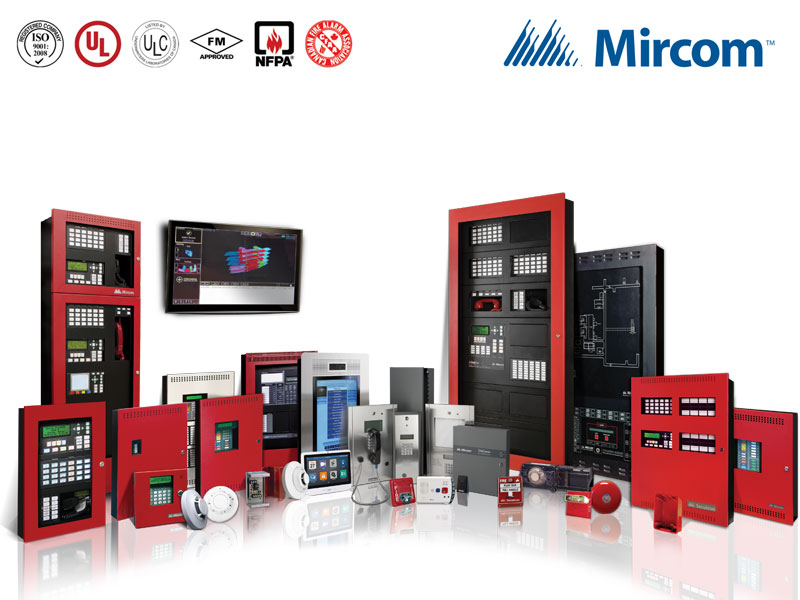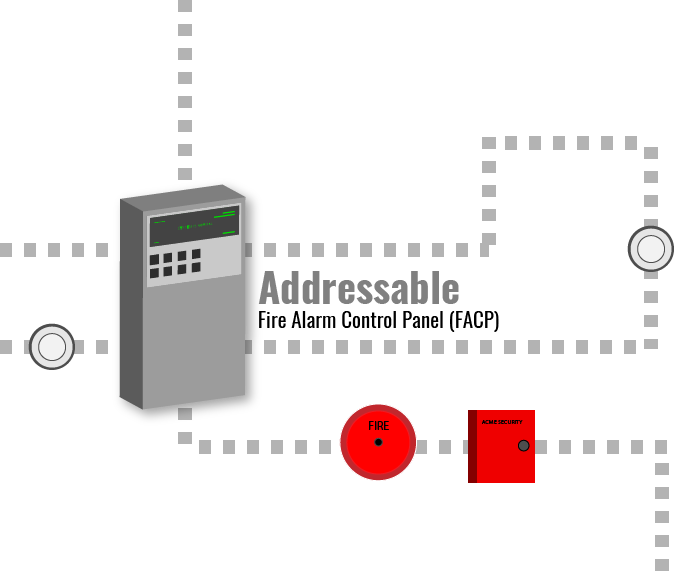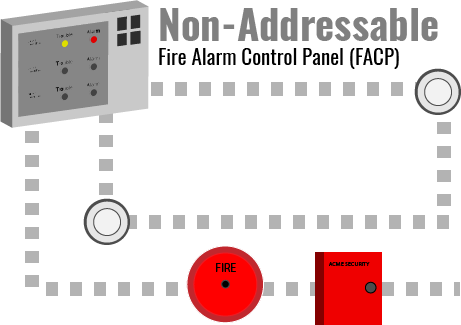A modern, addressable fire alarm is a specialized computer designed to monitor signals from any number of devices and ultimately make decisions about the severity of the situation from the information received. Devices communicate digitally with information including their position and status, and the system is connected to modules used to alert other residents and also local authorities.
A Fire Alarm Control Panel is the central part of any fire alarm system, it's responsible for connections between devices that initiate alarms (detectors, pull stations) on the initiating circuit, and devices that indicate problems (fire bells, strobes, and other communications) on the indicating circuit, as well as all of the logic that goes into where and when to use the information.
FACPs need to be checked with regularity to ensure they are working correctly to manufacturer specifications, including testing of all circuits and devices, as well as batteries and external connections in the event of a real emergency or power failure.


Non-addressable or conventional FACPs work exactly the same as addressable panels, but lack the digital communication between devices. Instead, devices are arranged on loops (called zones) which are used to distinguish between different floors, buildings, or areas of a building depending on the configuration.
Problems are detected digitally in the case of addressable panels and are detected by changes to the state of the circuit in the case of conventional panels. Electronic switches inside each device correlate to alarms or troubles in the system, this information is interpreted and organized for display and reporting by the FACP.
Manual pull stations are required to be placed beside exits, and are a simple switch that tells the FACP a fire has occurred. Some other components sense problems automatically:
- Smoke Detectors
There are two types of detection generally available for smoke detectors; those that work on photoelectric detection use a beam of light to determine if the space inside the detection chamber contains smoke or other cloud-like materials. An ionization detector works by sensing the charged particles in the air from intense heat sources or fire. Both are effective at detecting fire or pre-fire conditions (referred to as the incipient stage of a fire's development) and will dispatch signals to the audible and visual devices informing building occupants that it's time to leave the building. - Heat Detectors
Heat detectors detect excessive temperatures related to a fire. They are not considered life-safety devices as they are usually looking for temperatures in the area of 135°F. Rate of rise heat detectors are more accurate at predicting fire, and work on a sharp curve of increasing temperatures correlated to a fire., triggering occupants to leave the building. - Sprinkler Systems
Like Heat detectors, sprinkler systems are triggered by intense heat sources. The head on a sprinkler system will open if its subject to temperatures generally higher than 135°F (or mechanical damage). Heads on a system will only release if they have been subject to that temperature, per head. Sprinkler systems do not work like in movies, where they all start spraying water at once. The water from a sprinkler system is generally contaminated water and in the event of a head going off, a restoration company should be called immediately.










